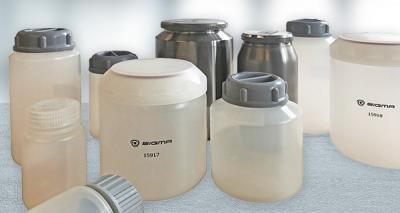
Bottle Guide
Ensuring correct and proper handling of all containers is key for safe, successful and user/centrifuge-friendly centrifugation. Always keep in mind the following points when you are planning your centrifugal applications and follow the user manuals and brochures, you can also contact us for any further advice.
Chemical Resistance and Thermal Stability
Always be considerate of the chemical resistance and thermal stability of the bottle material and follow the manual instructions regarding autoclaving. Each material has their own ideal autoclaving parameters. Centrifuge bottles and lids should be autoclaved separately to avoid any deformation of the bottles.
Fill Volume
Fill volumes must always be filled to its indication volume. Failing to do so, the bottle can collapse on itself due to the tremendous amount of force pressing down on the weight of the lids during the centrifugal run. The bottles should always be positioned opposite each other and have equal weights to maintain a stable balance.
Relative Centrifugal Force
Be aware of the maximum RCF the bottles can tolerate, if they are spun at excessive speeds the bottles will get damaged. This damage can lead to the contents of the bottle leaking unevenly which will then result in an imbalance, or in some cases, a rotor crash.
Glass Bottles
Typically glass bottles can be suitable for a maximum RCF of 400 x g and will require a rubber cushion to stabilise the bottle during centrifugation. There are some angle rotors that can accommodate special glass tubes suitable for higher speeds.
Inspection
Always visually inspect bottles before every use or on a regular basis, any damaged bottles should be discarded for preventive measures.
Now that you've read our advice, discover our wide range of centrifuges here.BACK
Certified to ISO9001 & ISO14001



